Science isn’t just a topic taught in schools, is it?
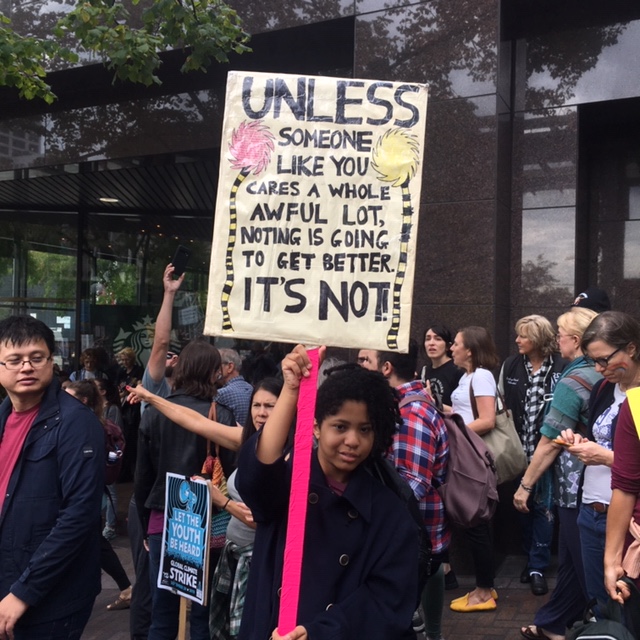
The 2019 Climate Week in New York City is in full swing, kicked into high gear with last Friday’s Global Climate Strike led by the world’s youth.
Their DIY artful protest signs shared their messages to the world’s leaders and inspired this post. This week, young climate advocate Greta Thunberg admonished governments and big corporations for not doing enough, and stealing her future and that of youth everywhere.
Being young, female or autistic doesn’t make one wrong or a pawn of adult manipulation, as some right wing politicians have implied. Rather, Thunberg’s impassioned plea to congress to listen to the science is direct, and is based on the consensus of the world’s scientists. Thunberg submitted as part of her testimony to Congress last week the
United Nations’ Intergovernmental Panel on Climate Change 2018 report, which states that we must reduce carbon emissions by 45% by 2030 (and to net-zero carbon by 2050) to limit global warming to just 1.5 degrees Celcius to avoid the worst of environmental disasters. How can we teach kids science in school, but then tell them to leave it at the door when the bell rings at the end of the day? One segment of the media holds Thunberg’s message up as a banner cry for change; others worry that her focus on government and big business shifts focus away from the significance of individual actions. And then the U.S. President mocks her on Twitter. .
Climate Science
So, the science has set our metrics and our deadline; step one is to cut carbon almost in half by 2030 to avoid the worst climate scenarios. Eco-advocates have pushed for individual actions for the last 20-30 years, and Thunberg calls for governments and corporations to change. So who’s right? That’s a question that creates a false construct. There is no need to choose. All three groups must implement change; all three are, and must continue to be, interconnected to hit the carbon targets.
So, if we need all three sectors of society to change, what does that look like?
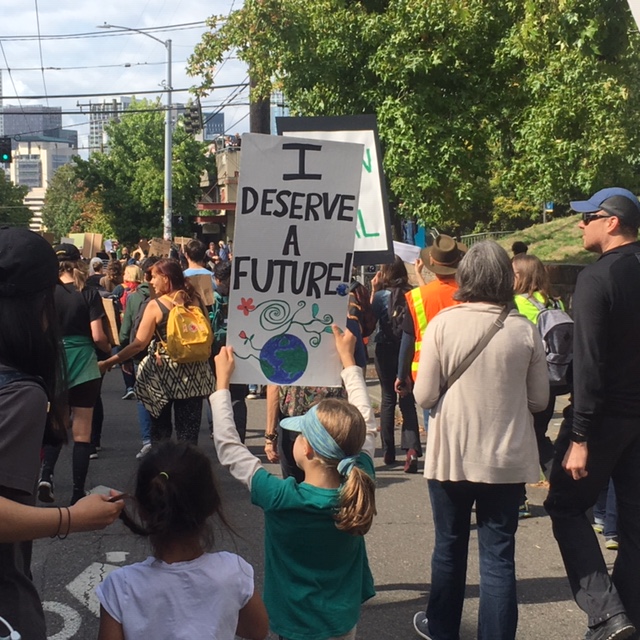

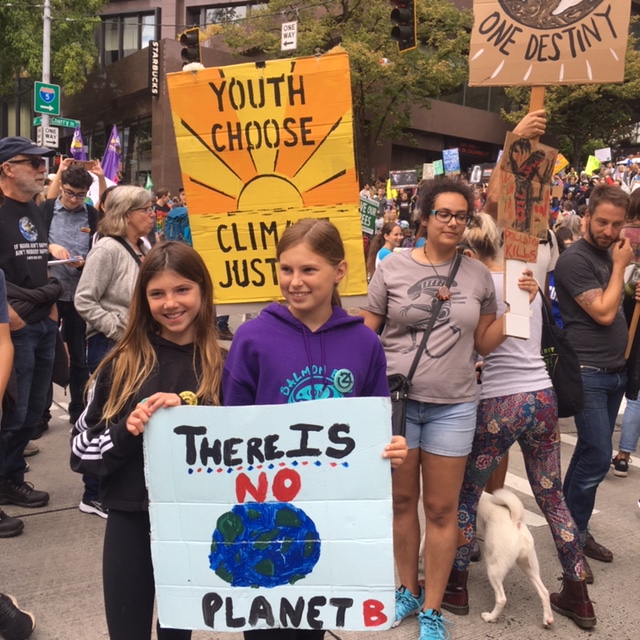
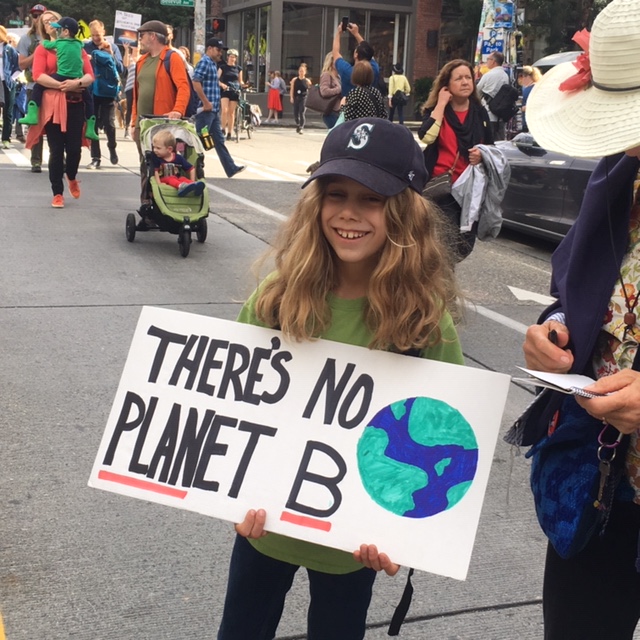
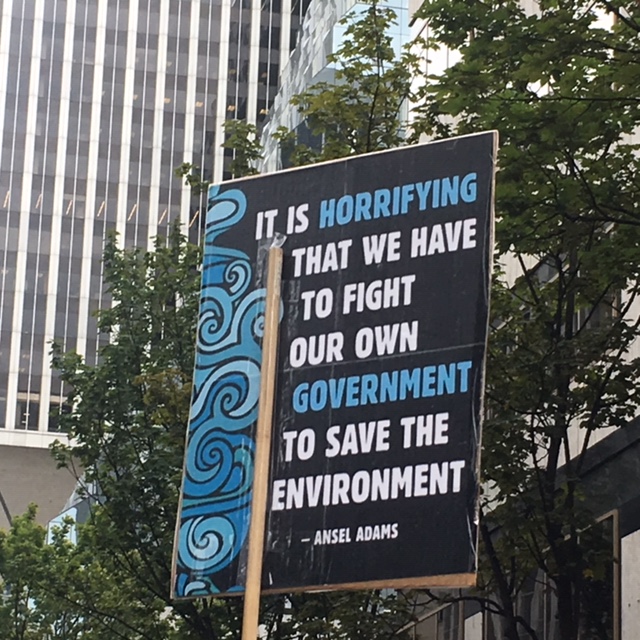
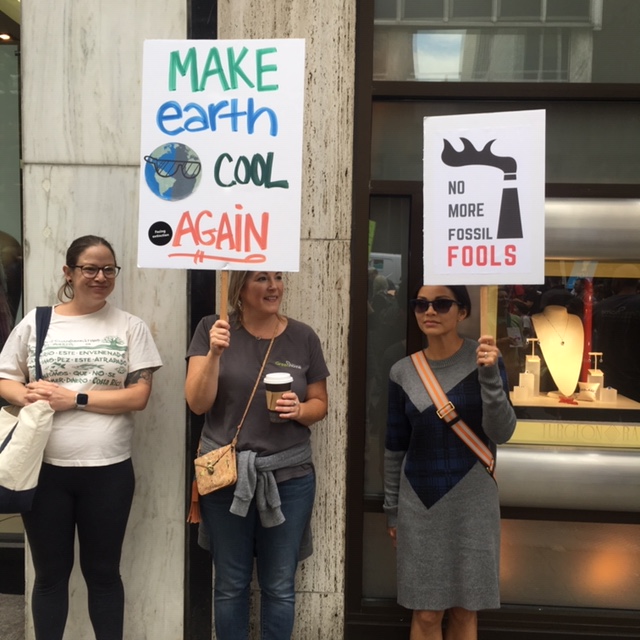
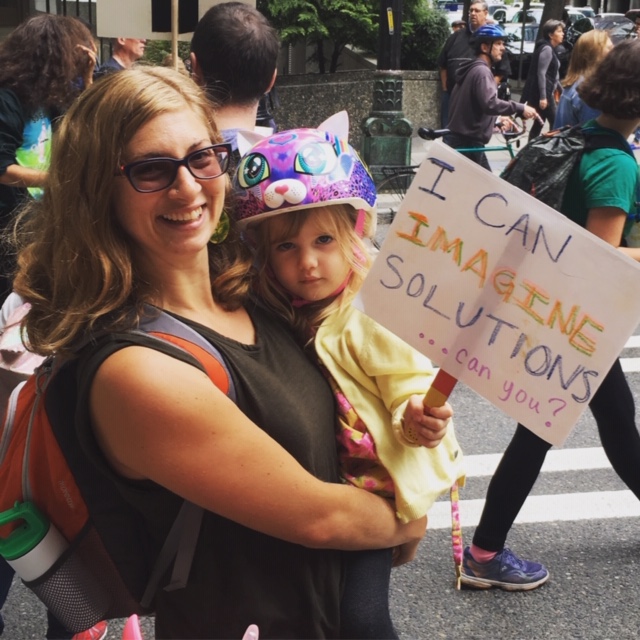
Kids call for climate action – it’s their future on the line.
Climate Action Trifecta
We need a trifecta of climate leadership and action – from individuals, private sector businesses and governments at all levels.
Individuals: Many concerned citizens have heeded the climate change call; personal actions range from eating vegetarian to carpooling to work, installing solar panels on our homes to downsizing our housing or amount of goods we buy, and on and on. And these collective actions have influenced the market – we see B Corporations, and Corporate Social Responsibility Reporting, and big business actions. But the rate of change has been too slow; climate change is already happening and we need help. To learn more about how you can take individual actions to cut carbon, read the action section of my post Climate Shift.
Private Sector Business: It’s time for the next industrial revolution, moving toward carbon-neutral technologies, waste-free products, and resource-efficient methods, while also supporting local economies and creating jobs. It’s time for businesses to innovate, to lead, to adapt or die. That’s what free markets are supposed to do. From Amazon to Walmart, more and more businesses are joining in carbon reductions, in part based on consumer, shareholder, and employee demand. Yet, 70% of emissions come from just 100 companies, most in the oil and gas industry (including the consumption of their products by consumers); it’s time for those companies to shift to the industries of the future, and fast.
Governments: Regulations, policies and incentives must be put in place that support the private sector and foster a market that moves us toward a climate positive future. From carbon taxes to transportation and energy subsidies to renewable energy and fossil-fuel free transportation, to clean air and water regulations, we need governments to step up. 24 U.S. States have stepped up so far, so there are clear precedents for the other states and the Federal government to join, follow, or use as a starting point.
Climate Solutions
There are hosts of lists of solutions, steps, and strategies. Two that are concise yet comprehensive are the Washington Post’s “Here Are 11 Climate Change Policies to Fight For in 2019” and , and Scientific America’s “10 Solutions for Climate Change.”
There is a lot of overlap, with common themes of personal actions from diet to transit and home energy to family size; business practices from eco-agriculture to open electric markets, and policies including carbon taxes, emissions goals, and a Green New Deal. If we all pull together in the same direction, we can cut carbon, while also boosting the economy by creating jobs, and supporting eco-friendly technologies, products and methods. It’s time for every sector and every level of society and in every corner of the globe, especially in the developed world which has the highest carbon footprint, to act and to act now.
